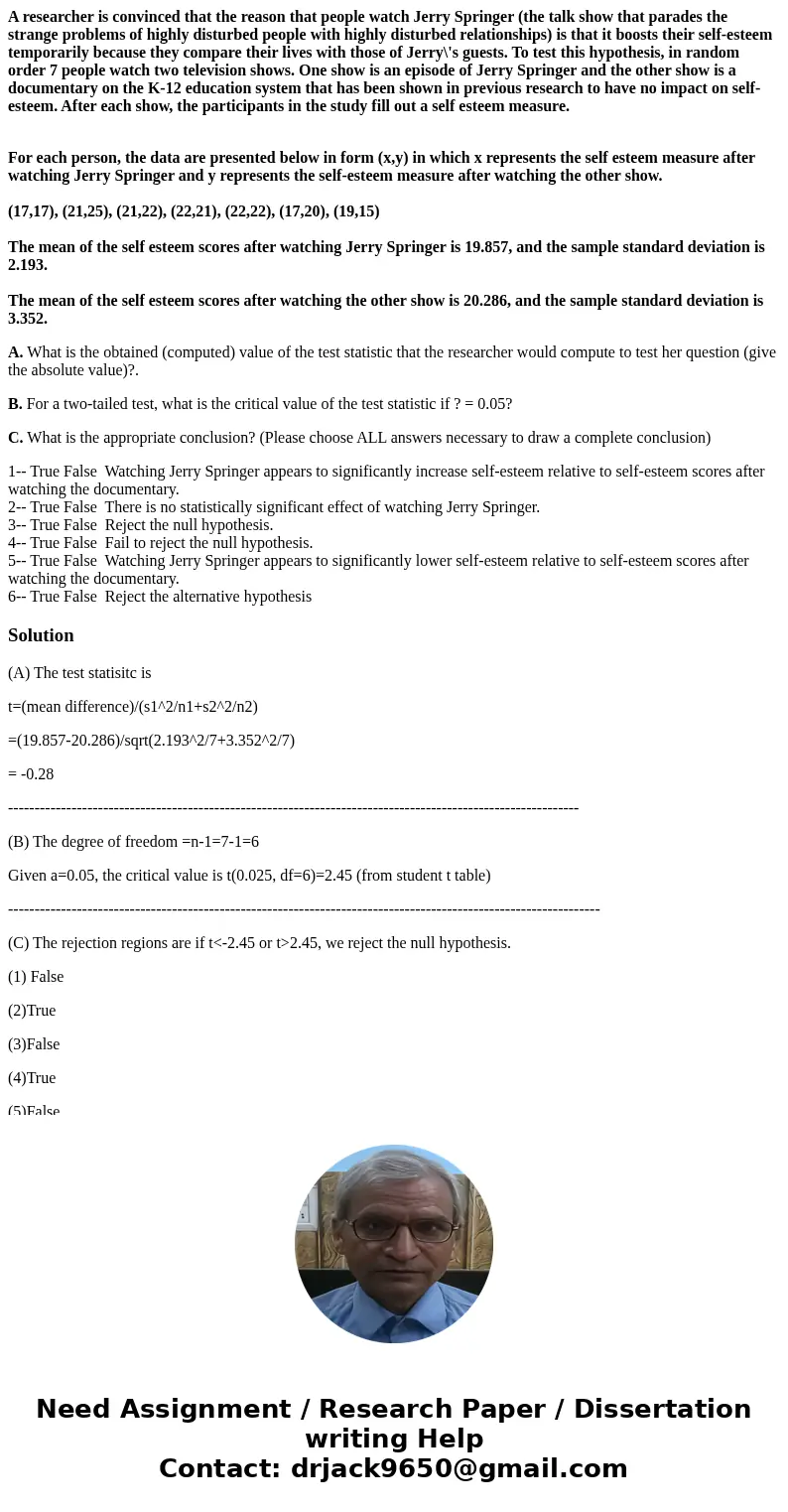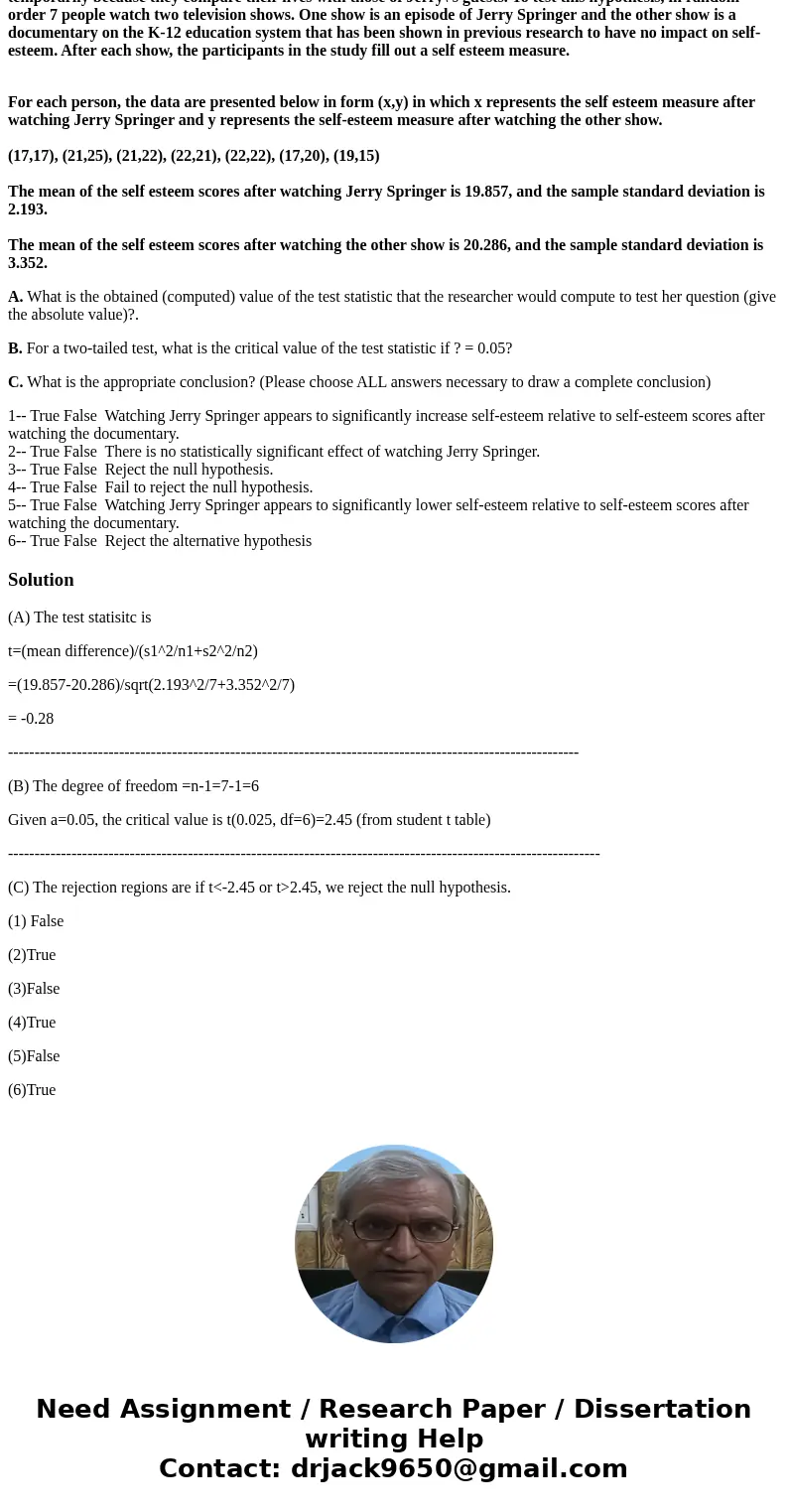A researcher is convinced that the reason that people watch
A researcher is convinced that the reason that people watch Jerry Springer (the talk show that parades the strange problems of highly disturbed people with highly disturbed relationships) is that it boosts their self-esteem temporarily because they compare their lives with those of Jerry\'s guests. To test this hypothesis, in random order 7 people watch two television shows. One show is an episode of Jerry Springer and the other show is a documentary on the K-12 education system that has been shown in previous research to have no impact on self-esteem. After each show, the participants in the study fill out a self esteem measure.
For each person, the data are presented below in form (x,y) in which x represents the self esteem measure after watching Jerry Springer and y represents the self-esteem measure after watching the other show.
(17,17), (21,25), (21,22), (22,21), (22,22), (17,20), (19,15)
The mean of the self esteem scores after watching Jerry Springer is 19.857, and the sample standard deviation is 2.193.
The mean of the self esteem scores after watching the other show is 20.286, and the sample standard deviation is 3.352.
A. What is the obtained (computed) value of the test statistic that the researcher would compute to test her question (give the absolute value)?.
B. For a two-tailed test, what is the critical value of the test statistic if ? = 0.05?
C. What is the appropriate conclusion? (Please choose ALL answers necessary to draw a complete conclusion)
1-- True False Watching Jerry Springer appears to significantly increase self-esteem relative to self-esteem scores after watching the documentary.
2-- True False There is no statistically significant effect of watching Jerry Springer.
3-- True False Reject the null hypothesis.
4-- True False Fail to reject the null hypothesis.
5-- True False Watching Jerry Springer appears to significantly lower self-esteem relative to self-esteem scores after watching the documentary.
6-- True False Reject the alternative hypothesis
Solution
(A) The test statisitc is
t=(mean difference)/(s1^2/n1+s2^2/n2)
=(19.857-20.286)/sqrt(2.193^2/7+3.352^2/7)
= -0.28
------------------------------------------------------------------------------------------------------------
(B) The degree of freedom =n-1=7-1=6
Given a=0.05, the critical value is t(0.025, df=6)=2.45 (from student t table)
----------------------------------------------------------------------------------------------------------------
(C) The rejection regions are if t<-2.45 or t>2.45, we reject the null hypothesis.
(1) False
(2)True
(3)False
(4)True
(5)False
(6)True


 Homework Sourse
Homework Sourse